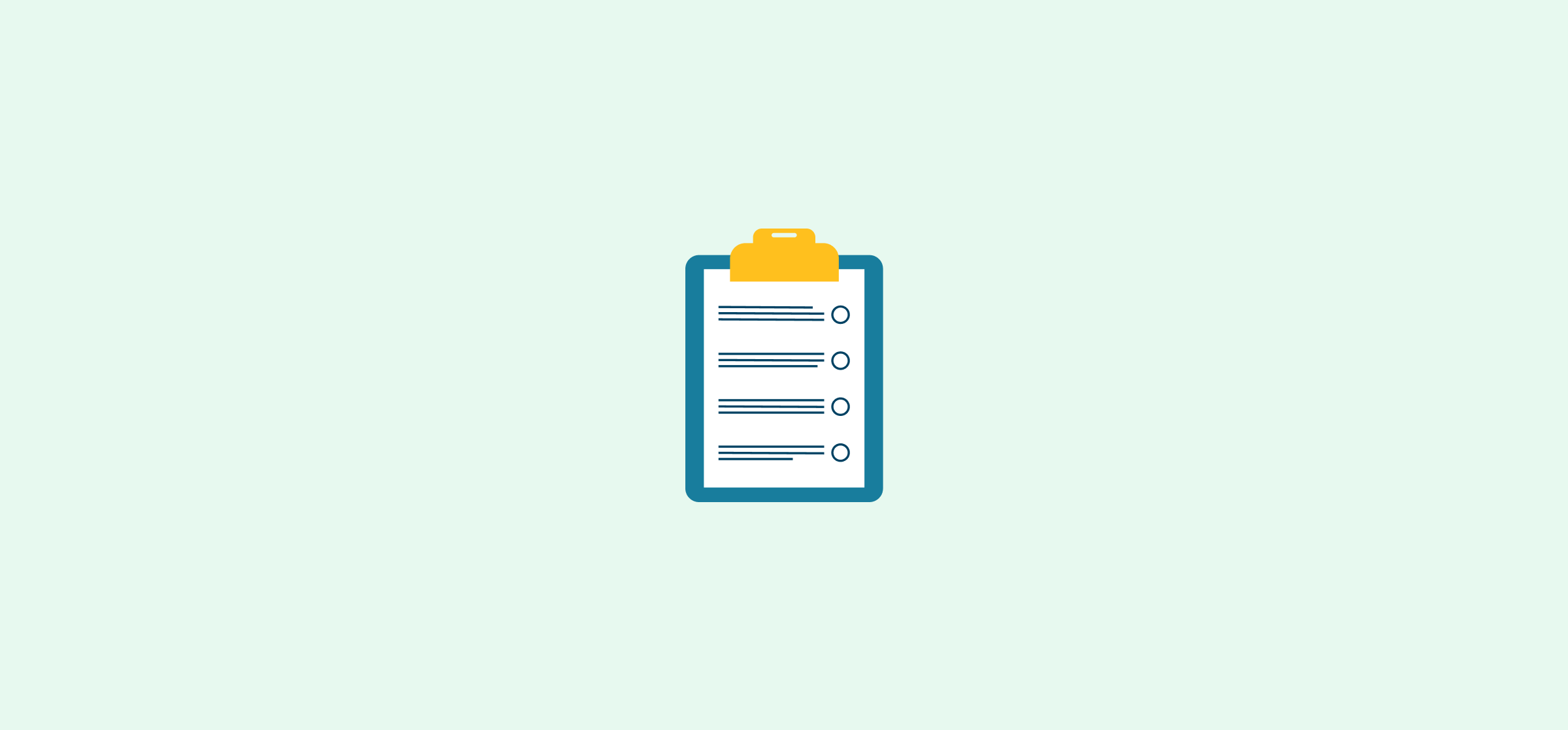Integration Rules: How To Control Data Flow Between Tools With Unito
How cluttered is your email inbox? Between newsletters you’ve totally been meaning to read, updates from your team, and endless notifications from the multiple tools you’re using, decluttering is an uphill battle. Now imagine if your inbox didn’t have an automated spam filter. How much worse would it be?
Unito does for your workflows what you wish email had done for communication. When you build workflows that encompass all your tools, you’re creating a pathway for all your work items to get from one tool to the other and back. But with Unito’s rules, you can tailor that process to your specific use case and keep things organized. Here’s how.
What are integration rules and how do they work?
Rules are how you control the flow of information between your tools. You can filter work items by labels, columns, assignees, and more, meaning only some of them will be included in your workflow. With rules, you can also map status across tools, so that tasks completed in one tool will be automatically completed in the other.
How to build a rule
Building rules can be done in just a few clicks. Start by creating a flow.

Then, choose the tools and blocks of work you need to connect.
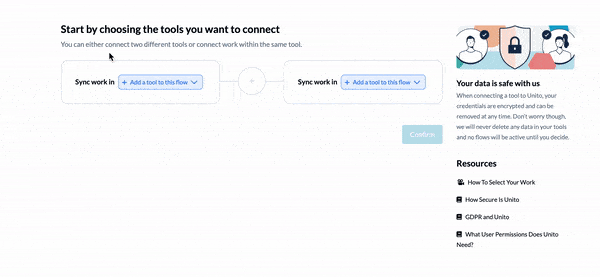
Hit Next and you’ll be taken to the Rules tab.
By default, your flow will sync all tasks that haven’t been closed. You can build rules in one tool or both by clicking Filter tasks. The wording here will vary depending on the tool you’re using. If you’re using Trello, for example, you’ll see Filter cards.
The exact rules you can build will vary depending on the tool you’re integrating. For instance, with Asana you could build a rule that filters tasks by Assignee, Section & Columns, Tags, and Task Types.
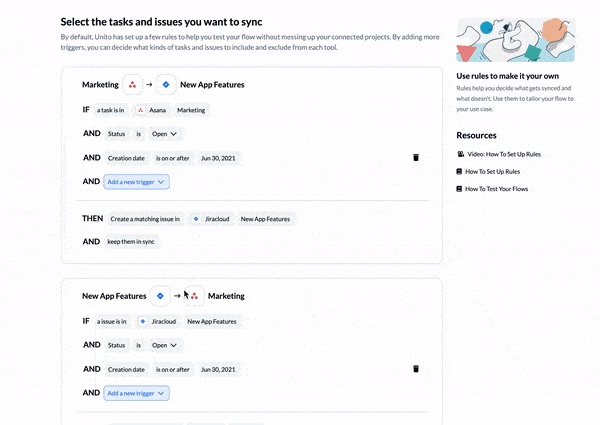
Meanwhile, our Jira integration lets you build rules to filter issues by Assignee, Components, Epics, Fix Versions, Issue Types, Labels, Sprints, and Statuses.
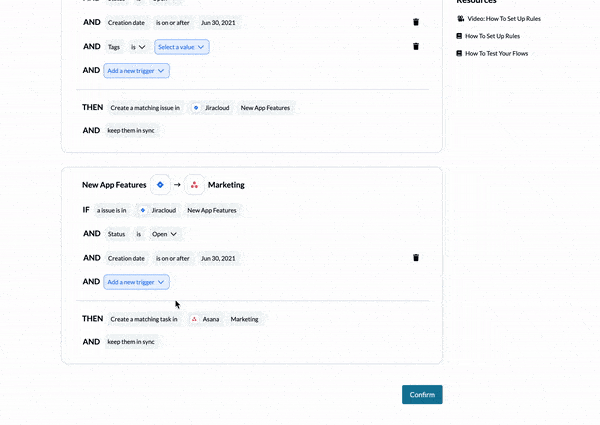
You could even build multiple rules for each side of your flow to further restrict which tasks get through. With rules, you can let as much or as little information out of your tool as you need.
Now that you know what rules are and how they’re built, here’s what you can do with them.
Rules in practice
Curious how rules might apply to your use case? Here are just a few examples.
Creating a single executive overview project
It’s tough for leaders to know what’s going on when your organization’s work is spread out over multiple tools. But to know where their leadership is most needed, an executive needs a quick way to get an eye on high-priority items.
With Unito’s rules, you can give any executive that visibility. All you need to do is build a workflow encompassing your projects, give each high-priority item a tag — such as Key Deliverable — and build a rule that only syncs tasks with this tag.
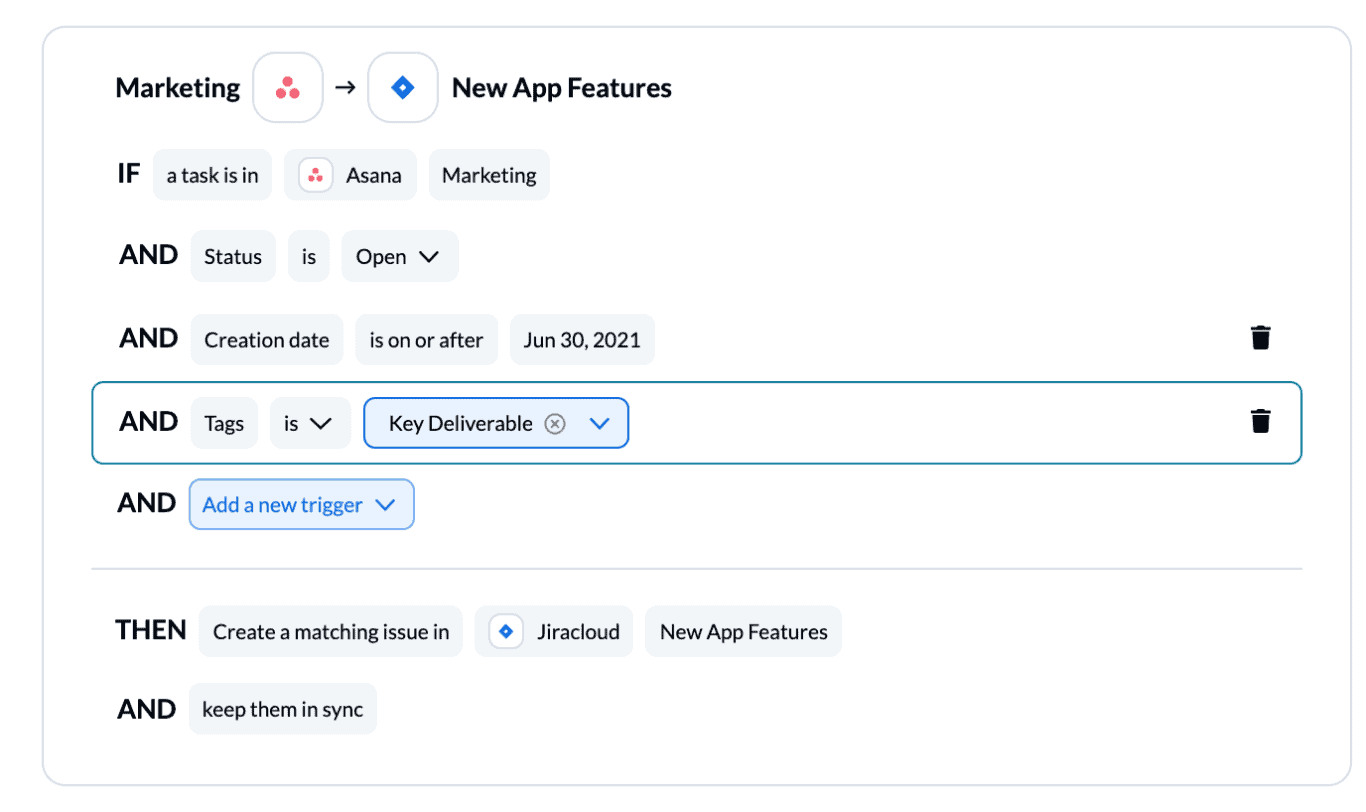
Want to know more about how this is done? Check out how we do it with Trello and Asana.
Maintain information security while working with external collaborators
If your organization collects any kind of data, it’s your responsibility to keep it safe. When working with multiple external collaborators, that means making sure no one gets a glimpse at someone else’s information. Do your collaborators use the same tools you do? Probably not. That means someone needs to manually find information in one tool and copy it into another. Depending on how many tools are involved, this can be a huge waste of time. On top of that, endless copy-pasting means there’s a mistake waiting to happen.
By building a rule into your workflow, you can ensure that only work items assigned to a specific person get synced over to a particular tool or project. That means only information in these tasks gets carried over to the appropriate external collaborator.
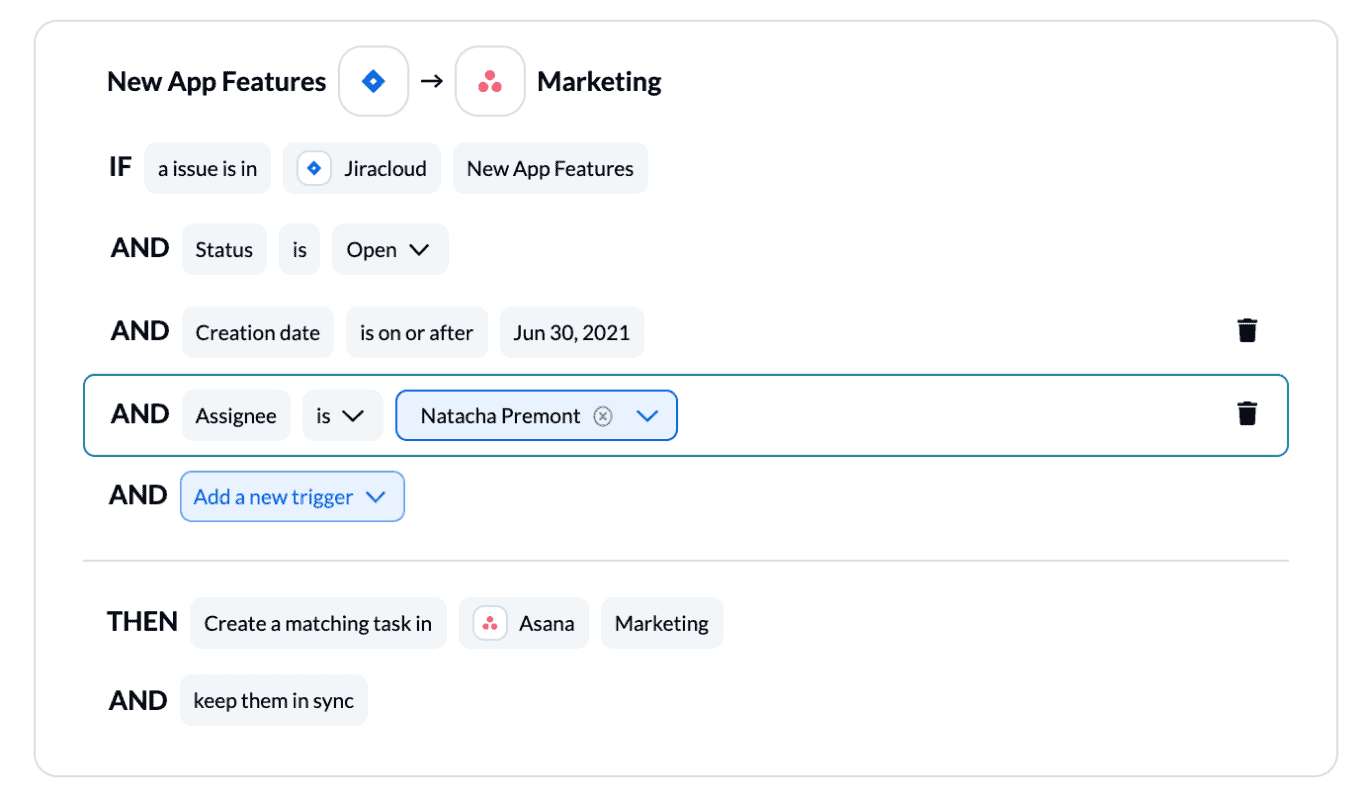
Want to know more about how Unito enables work with external collaborators? Check out how e-commerce agency Netalico is making it happen.
Avoid clutter during cross-team collaboration
Modern organizations can hardly afford to keep work within departmental lines. No matter what field you’re in, problems get solved faster when people with different backgrounds and expertise come together. But when you’re not intentional with this kind of collaboration, noise starts to accumulate in your communication channels and no one knows what’s really going on.
If you build rules that filter tasks by specific sections, columns, or statuses, you can ensure that a task only gets sent to another team’s tool when it’s ready. If your marketers need a software team’s support for a marketing campaign, does the software team need to see the marketers deliberating on which paid channel they should target? No, they only need to see the task when it’s their time to contribute. By building a rule that only syncs this task when it reaches a certain section in the marketers’ work management tool of choice, developers don’t have to worry about extra clutter in their own tool.
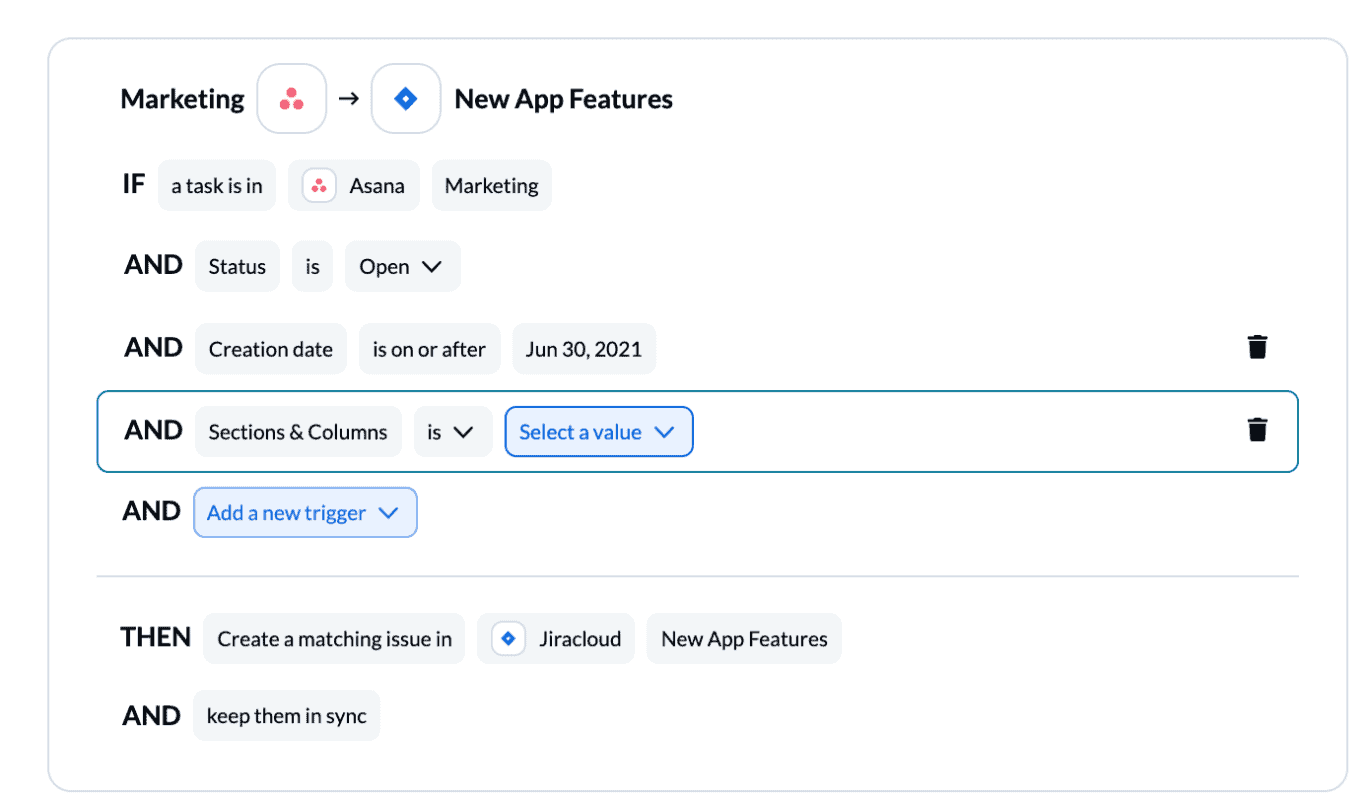
Want to know more about how rules help teams work better together? Check out how we’ve been doing it with HubSpot and Asana.
Get exactly what you need every time
Unito transforms the way your work management tools interact. By building a Unito workflow, everyone can work together without worrying about which tool they’re in. With Unito’s rules, you can get that and control the flow of information between tools. Want to see what else Unito can do? Try it free for 14 days, no credit card required.
Want to know more?
Here's our breakdown of Unito features that are essential for streamlining your workflows.

